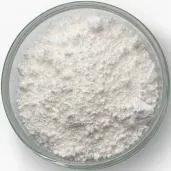
Understanding E141 Food Additive and Its Impact on Food Safety and Quality
Understanding E141 Food Additive What You Need to Know
Food additives are substances added to food to enhance its flavor, appearance, or preservation, and one such additive is E141, also known as copper complexes of chlorophyll. This food colorant is derived from chlorophyll, the pigment that gives green plants their color, and it has various applications in the food industry. In this article, we will delve into what E141 is, its uses, safety, and potential concerns that consumers should be aware of.
What is E141?
E141 is a food additive that comes from the natural green pigment chlorophyll. Chlorophyll is a vital component in the process of photosynthesis in plants, making it crucial for plant life. The copper complexes of chlorophyll are created by the reaction of chlorophyll with copper salts, which intensifies its stability and colorfastness. The resulting compound appears dark green and is primarily used as a food colorant.
Applications of E141
E141 is typically used in various products to enhance their color. It finds applications in a range of food items, including beverages, dairy products, confectioneries, and processed foods. Its vibrant green color can make food more visually appealing, which is an essential aspect of food marketing. Consumers tend to be drawn to products that look fresh and appetizing, and E141 helps achieve this effect.
In addition to its coloring properties, E141 also offers nutritional benefits. Being derived from chlorophyll, it possesses antioxidant properties, which may contribute to health benefits. However, the concentrations in which E141 is used in food products are usually low and primarily intended for aesthetic purposes rather than as a nutritional supplement.
Safety and Regulations
e141 food additive

E141 has been evaluated for its safety by various food safety authorities, including the European Food Safety Authority (EFSA) and the Food and Drug Administration (FDA). These organizations have deemed E141 as safe for consumption when used within prescribed limits. However, as with any food additive, excessive consumption may lead to adverse effects. The acceptable daily intake (ADI) for E141 has been established, ensuring that it can be consumed safely without negative health impacts.
That said, certain individuals may experience allergic reactions or sensitivities to specific food additives. It is always advisable for consumers to read ingredient labels, especially those with known allergies or sensitivities.
Potential Concerns
While E141 is generally recognized as safe, there are ongoing debates regarding the consumption of food additives in general. Some consumers prefer to avoid synthetic or even natural additives, opting for whole, unprocessed foods instead. The increasing trend towards clean eating and transparency in food labeling has brought attention to food additives like E141.
Moreover, environmental concerns surround the production and sourcing of additives. The process to extract and manufacture E141, particularly if not sourced responsibly, can raise sustainability questions. As a result, some manufacturers are exploring alternatives or ensuring that their practices have minimal ecological impact.
Conclusion
E141, or copper complexes of chlorophyll, is a widely used food additive that adds vibrant green color to various food products. With its origins rooted in nature, it provides a visually appealing aspect to foods while also offering some potential health benefits. Nevertheless, consumers should remain informed about the ingredients they consume and consider personal preferences regarding food additives. As the food industry continues to evolve, transparency and sustainability will likely play crucial roles in shaping consumer choices and regulatory practices surrounding food additives like E141.
-
Buy High-Quality Trichloroisocyanuric Acid for Sale | TCCA 90% SupplierNewsAug.30,2025
-
Pure Sodium Dichloroisocyanurate Dihydrate | Powerful DisinfectantNewsAug.29,2025
-
Industrial Chemicals: Quality & Purity for Every IndustryNewsAug.28,2025
-
Nitrile Rubber Honoring Strict Production StandardsNewsAug.22,2025
-
Aspartame Ingredients Honoring Food Safety ValuesNewsAug.22,2025
-
Fertilizer for Balanced Plant NutritionNewsAug.22,2025
-
Cyanide Gold Processing with High Purity AdditivesNewsAug.22,2025
Hebei Tenger Chemical Technology Co., Ltd. focuses on the chemical industry and is committed to the export service of chemical raw materials.
-

view more DiethanolisopropanolamineIn the ever-growing field of chemical solutions, diethanolisopropanolamine (DEIPA) stands out as a versatile and important compound. Due to its unique chemical structure and properties, DEIPA is of interest to various industries including construction, personal care, and agriculture. -

view more TriisopropanolamineTriisopropanolamine (TIPA) alkanol amine substance, is a kind of alcohol amine compound with amino and alcohol hydroxyl, and because of its molecules contains both amino and hydroxyl. -

view more Tetramethyl Thiuram DisulfideTetramethyl thiuram disulfide, also known as TMTD, is a white to light-yellow powder with a distinct sulfur-like odor. It is soluble in organic solvents such as benzene, acetone, and ethyl acetate, making it highly versatile for use in different formulations. TMTD is known for its excellent vulcanization acceleration properties, which makes it a key ingredient in the production of rubber products. Additionally, it acts as an effective fungicide and bactericide, making it valuable in agricultural applications. Its high purity and stability ensure consistent performance, making it a preferred choice for manufacturers across various industries.





